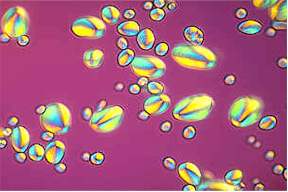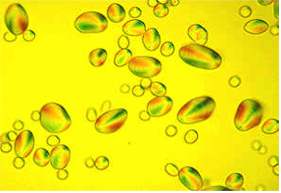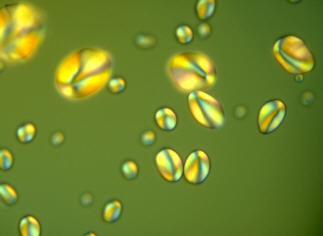|
|
Due to the regular molecular structure of a starch grain (radial symmetry),certain sections of it absorb polarized light completely. Consequently, these zones look dark. The absorption pattern of the starch grains can be changed by turning of a device called analyzer that has been placed within the light beam. The position of the analyzer in the picture to the left differs 90 degree from that in the picture to the right. The photos were taken with the help of an interference contrast microscope. This microscopic technique works with polarized light. The eccentric layering of the grains that is typical for potato starch becomes visible by the interference contrast. Structures (molecules) that extinguish polarized light of a certain direction display a direction-dependent behavior (i.e. they are oriented in a certain direction). This orientation is called anisotrophic. Molecules of other orientations are called isotrophic. Lower picture: higher resolution, another adjustment of the interference contrast microscope (any background colour can be chosen when using a lambda-chip).


